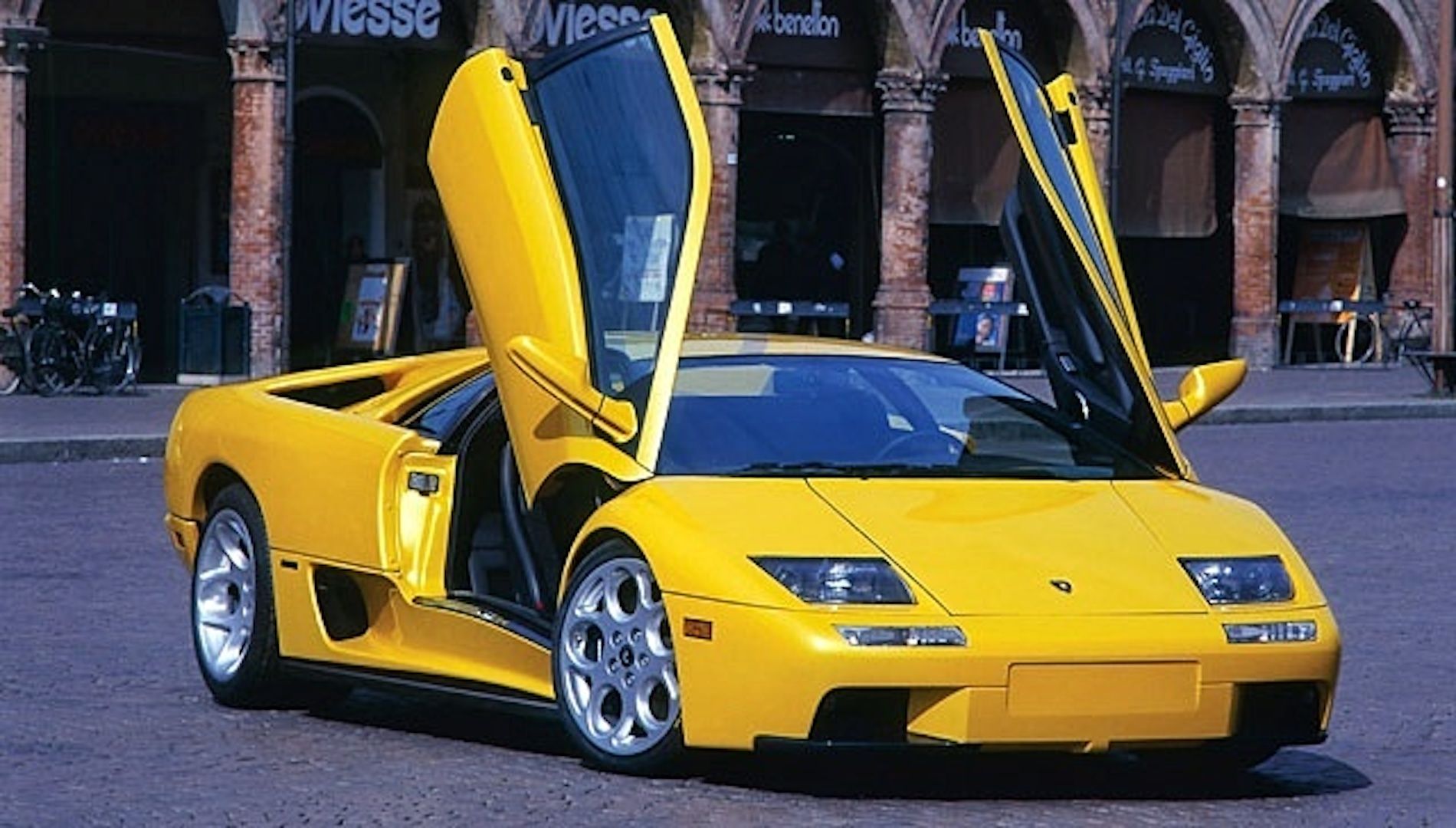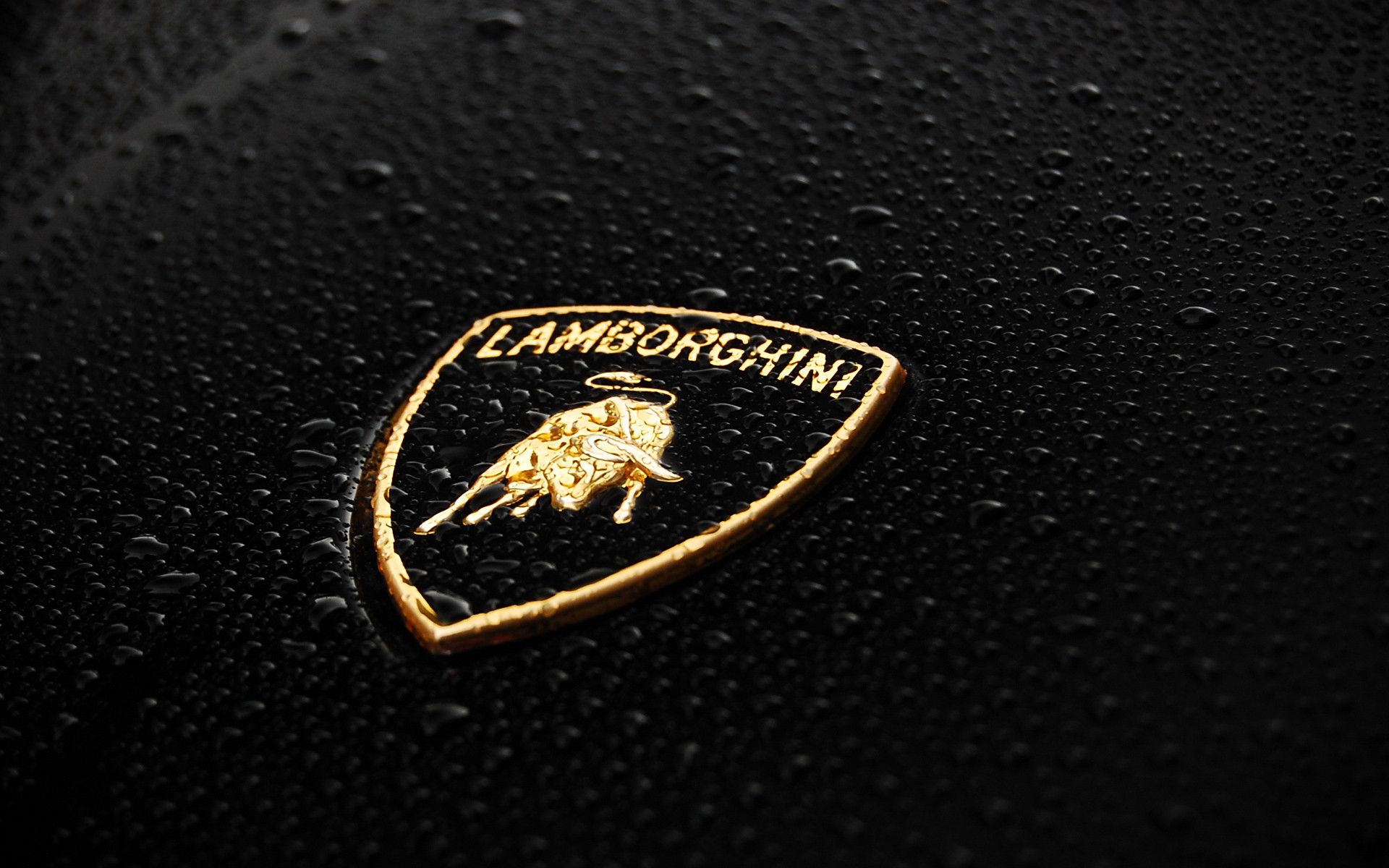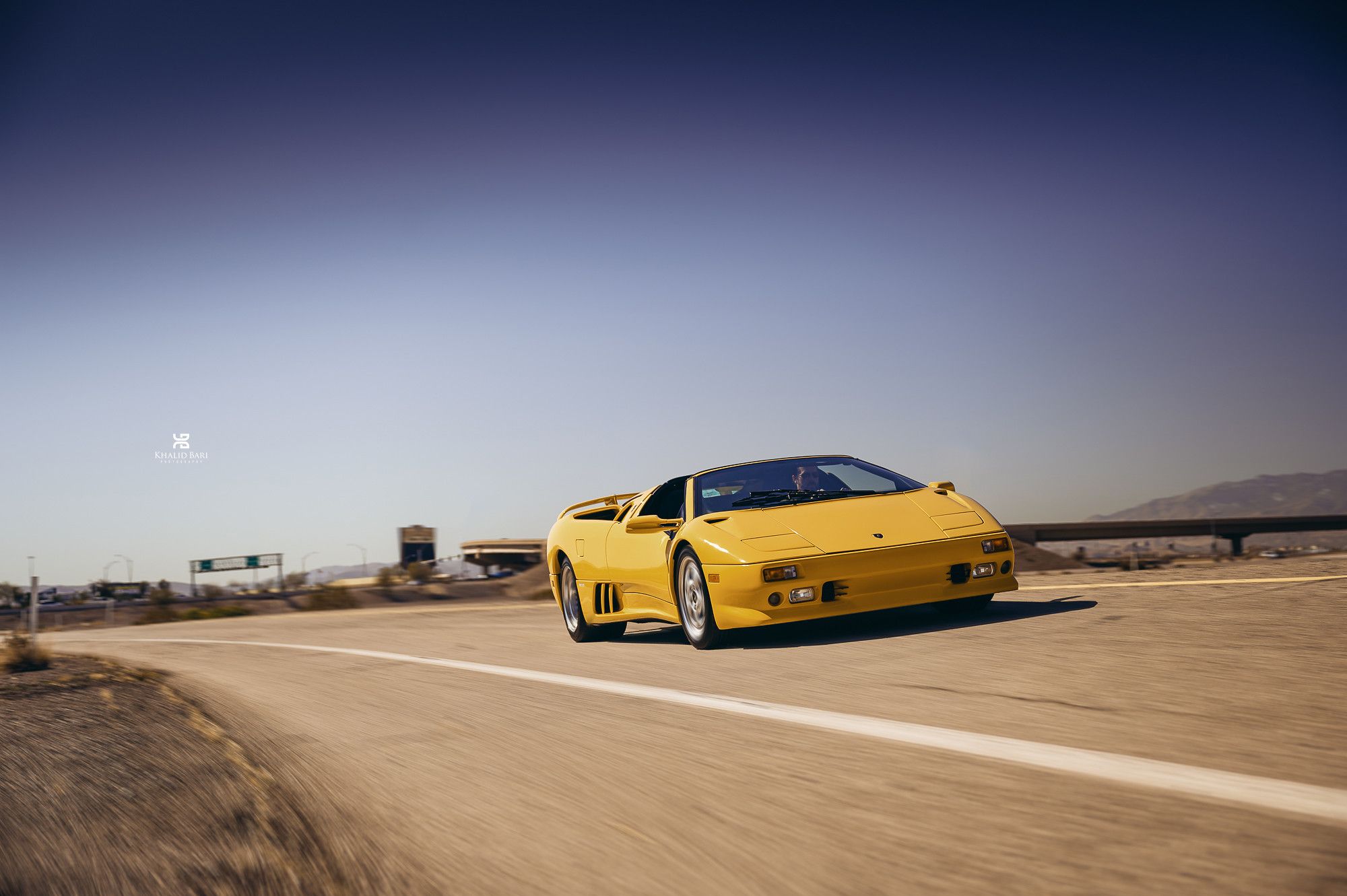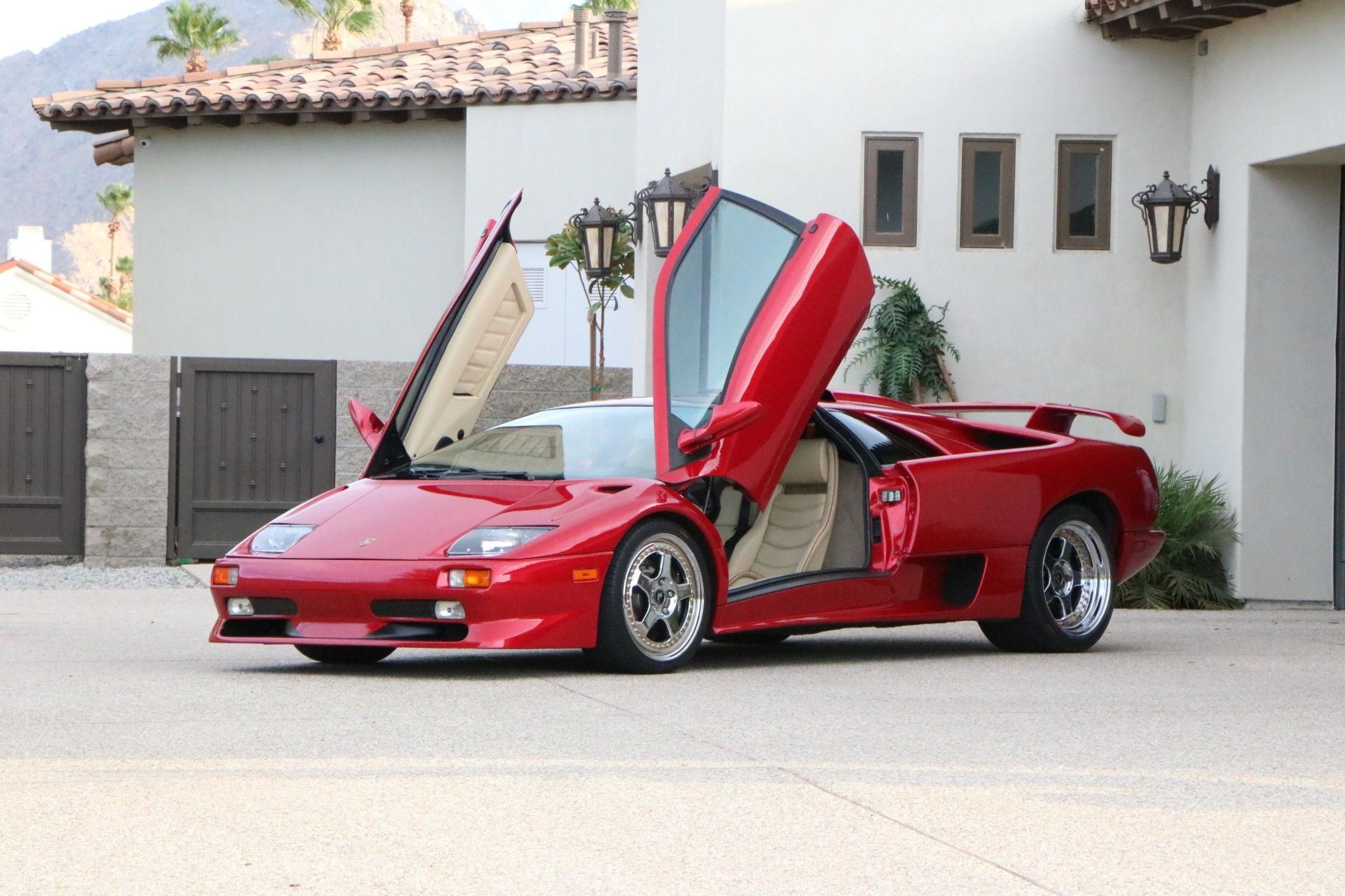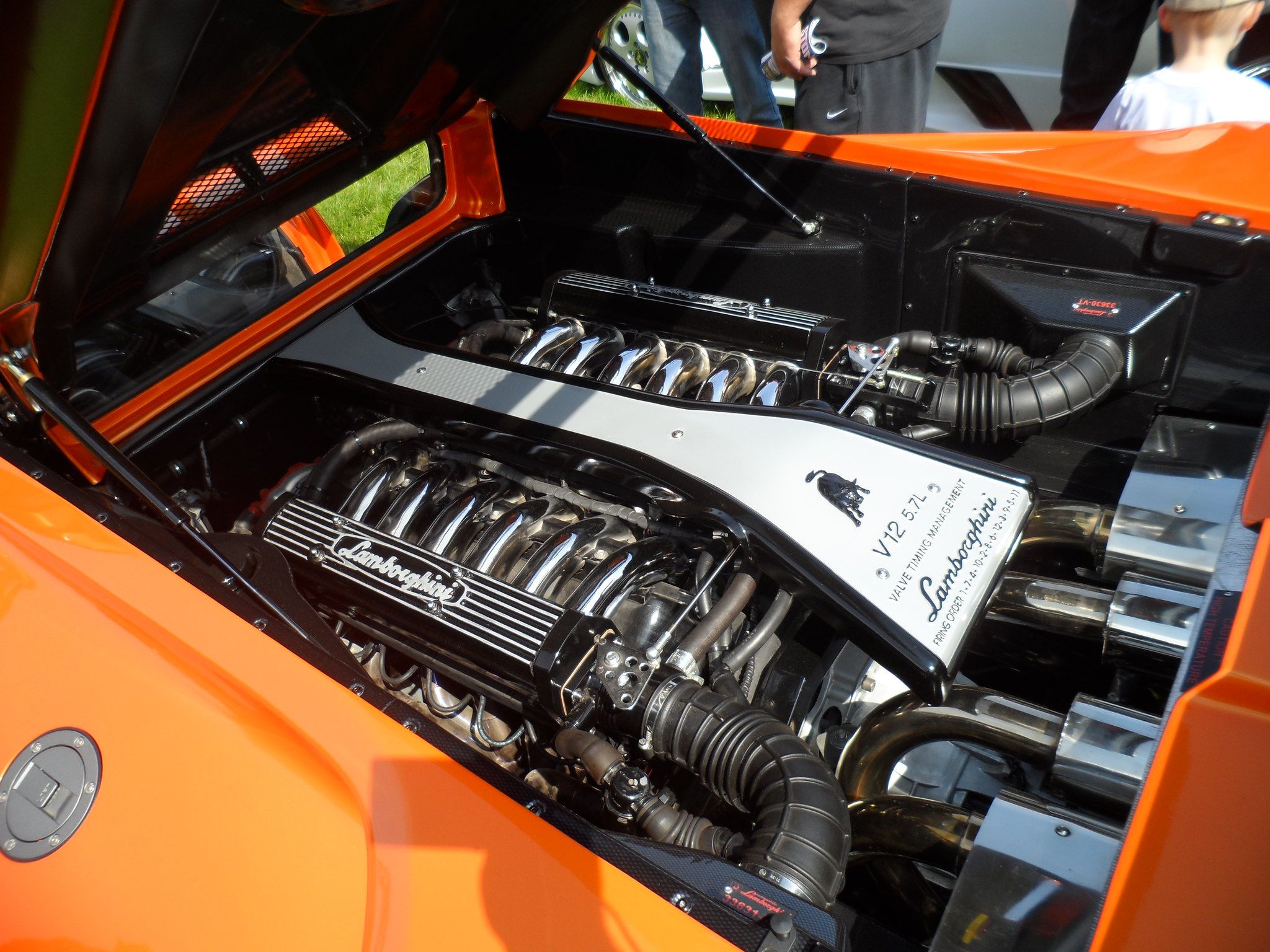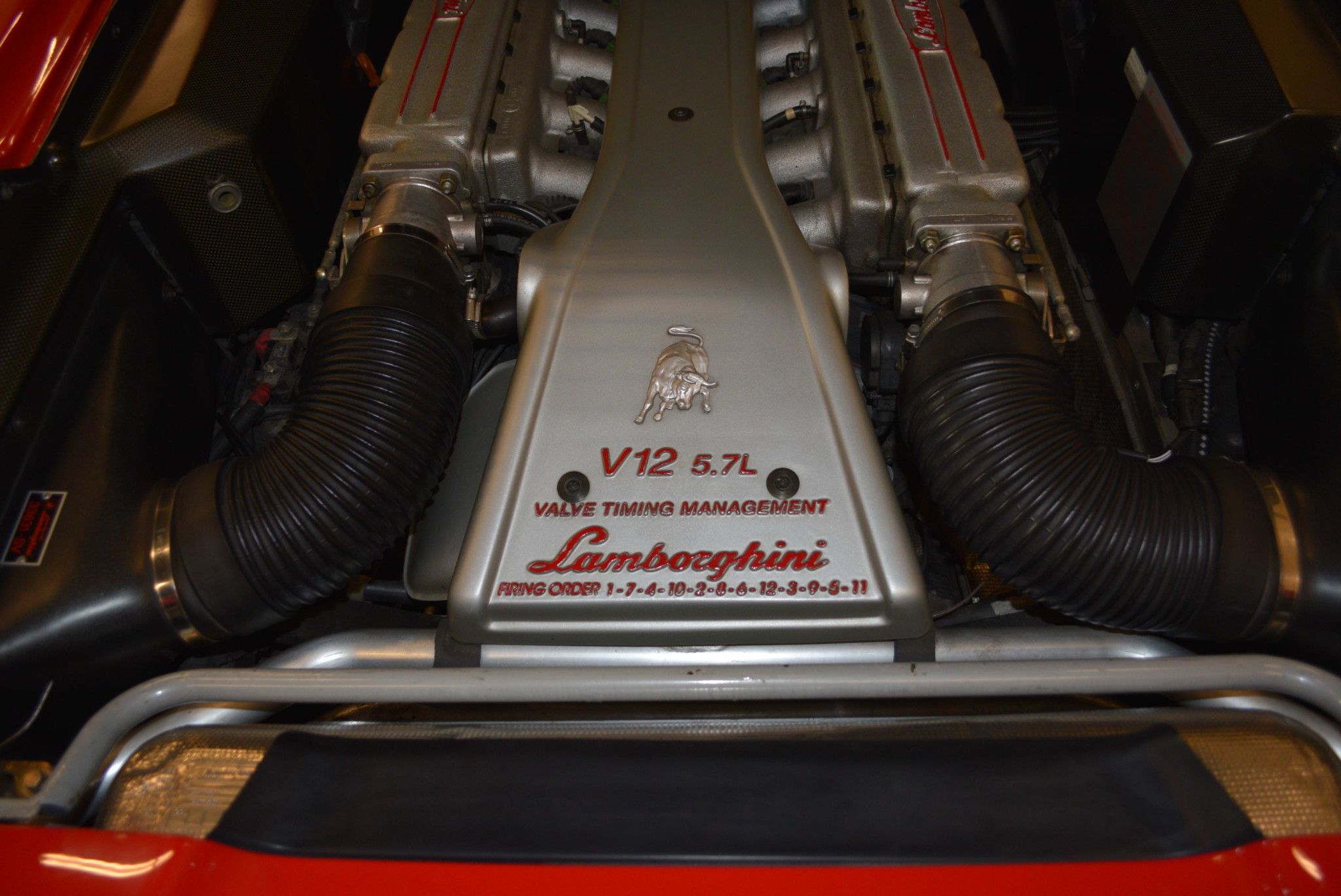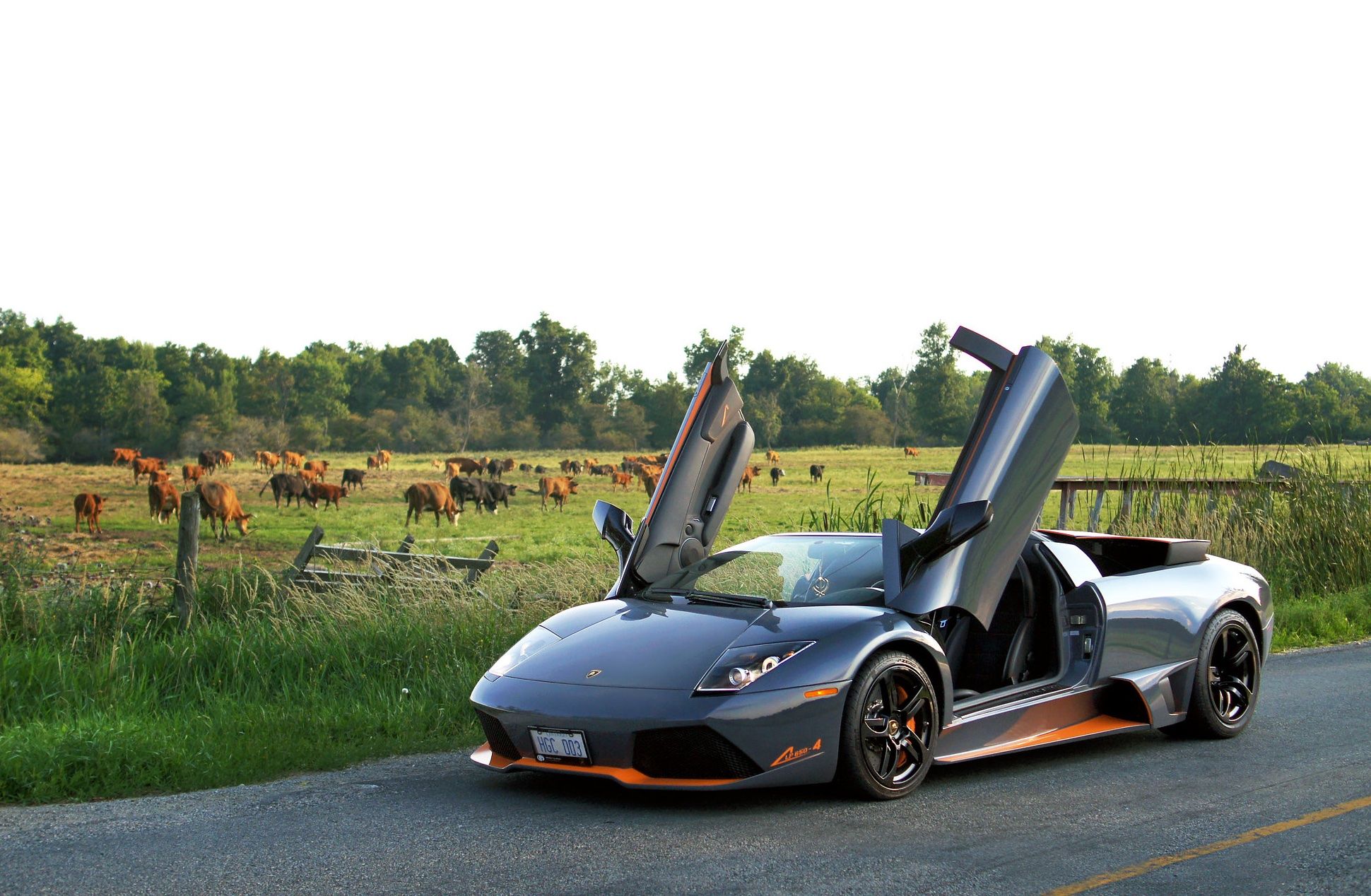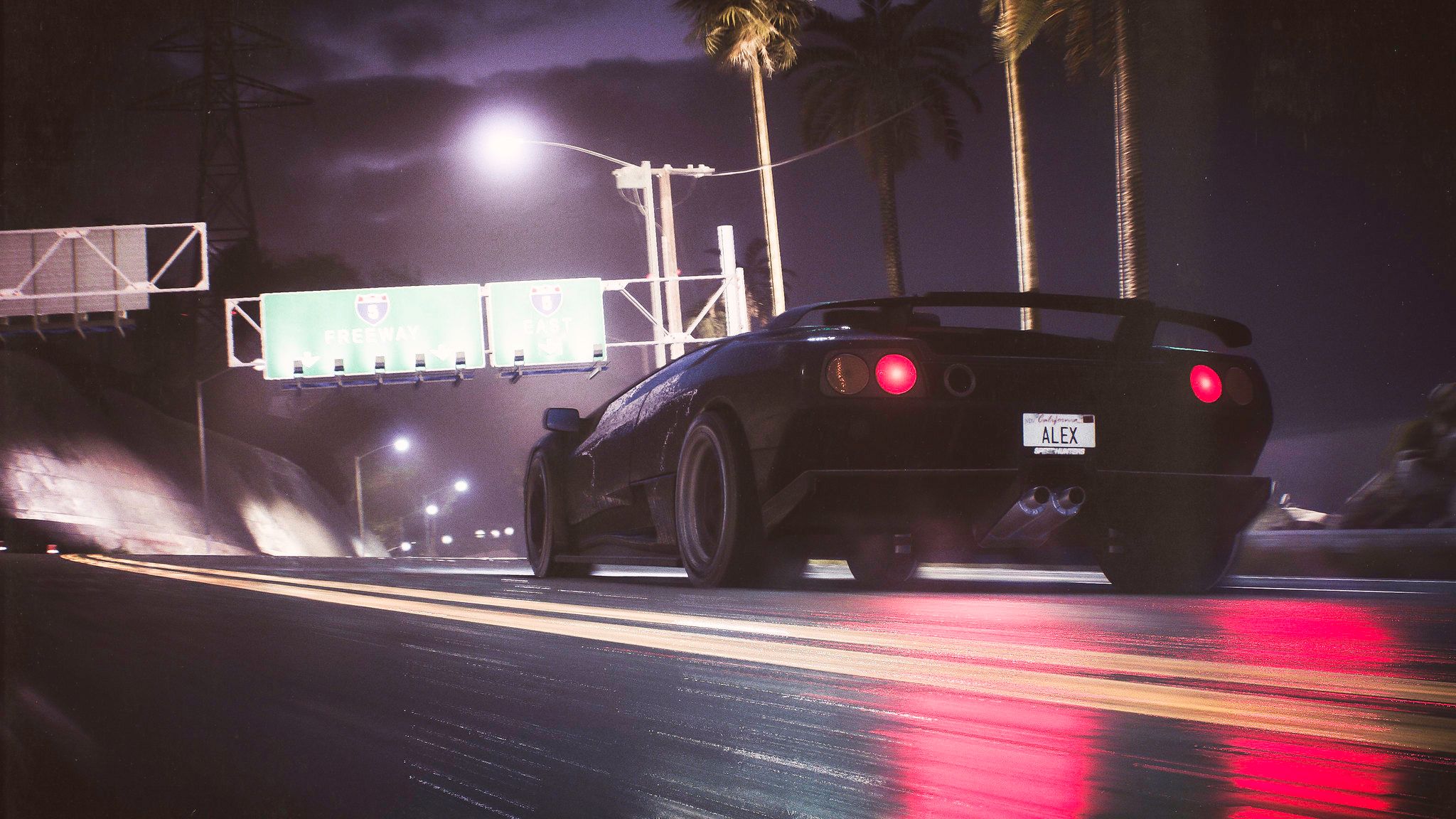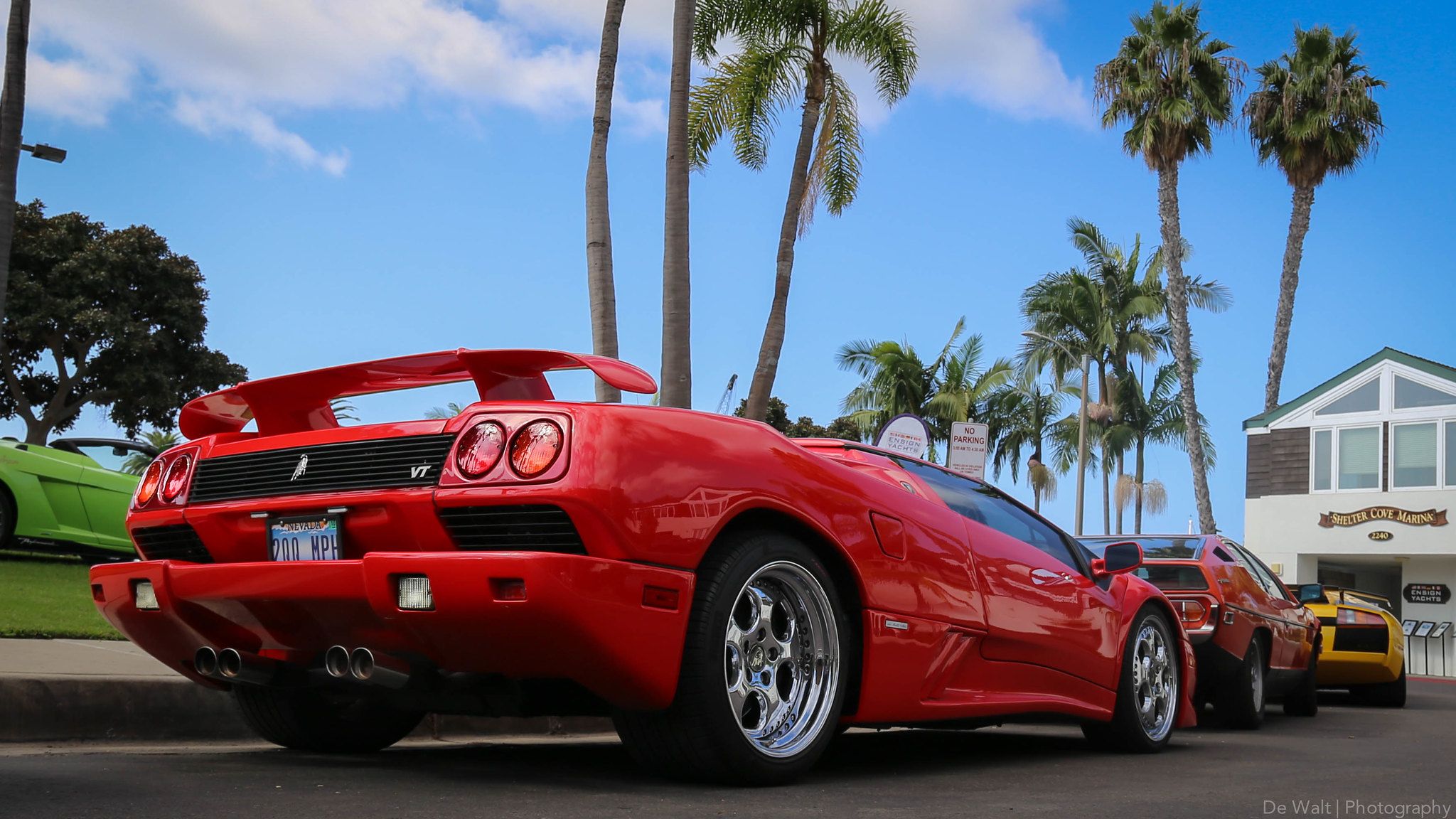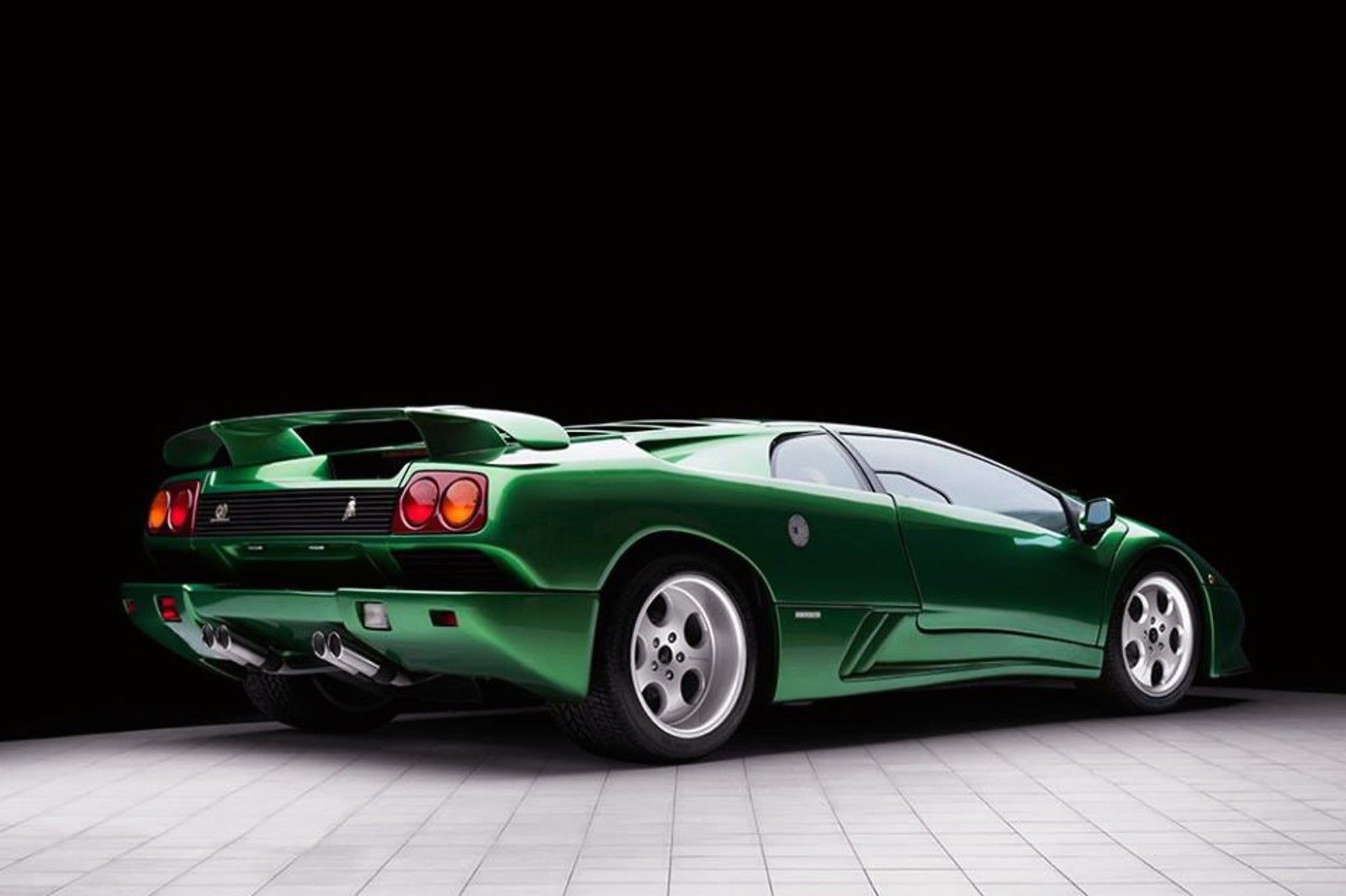The early '90s saw the Ferrari Testarossa and the Lamborghini Diablo competing with each other for the covers of automotive magazines, video game depictions, and television and movie airspace. The competition between these two iconic sports cars was apparent to not only the enthusiast but also to the most casual observer of automotive pop culture.
What many people aren’t aware of is how deeply rooted this competition between Ferrari and Lamborghini actually is. It was a rivalry between each company’s namesake that gave rise to the Lamborghini automobile company. All it took was Enzo Ferrari insulting Ferruccio Lamborghini for the latter to switch from the lucrative tractor business to the luxury sports car business. The story is, Ferruccio Lamborghini was an avid sports car collector. He had a Ferrari 250 GT in his collection but noticed a problem with the clutch. He reached out to Ferrari with a possible solution. To which Enzo Ferrari responded, “Lamborghini, you may be able to drive a tractor, but you will never be able to handle a Ferrari properly.” “This was the time,” Ferroccio said, “when I decided to make the perfect sports car.” To this day, the Lamborghini Diablo is still the supercar to beat, and the following are 10 reasons why.
10 The Devilishly Clever Name of the Lamborghini Diablo
Ferruccio Lamborghini was born on April 28, 1916. According to astrology, this made him a Taurus. The symbol for this zodiac sign is the bull. This is significant, not because of astrology per se, but because Lamborghini identified himself and his company with the bull. This bull obsession extended beyond a mere astrological connection. Ferroccio’s passion for bulls culminated in a trip to Seville in the early '60s when he visited the ranch of a famous breeder of fighting bulls. So it’s no wonder the Lamborghini logo is a raging bull and the majority of Lambo’s are named in honor of bulls.
When the Lamborghini Diablo was still in production, it was referred to as “Project 132.” It was set to replace the Countach, which was one of the few Lambos not named after a fighting bull. According to the car’s designer, the Countach got its name from an exclamation of admiration in Piedmontese. The word diablo, on the other hand, is Spanish for “devil.” The Diablo, however, is not named after the devil. Following the Lamborghini tradition, it is named after a bull. More specifically, the Diablo was the name of a fighting bull who faced off against the famous matador “El Chicorro” in the 19th century.
9 The Lamborghini Diablo’s Decade of Dominance
The Lamborghini Diablo was manufactured from 1990 to 2001. Ferruccio Lamborghini once said that he wasn't "interested in ending up like [his] colleagues, with heart problems!” It should be noted here that the mechanical visionary passed away from a heart attack in 1993. As such, the Diablo was the last model he would see his company produce.
As for his supposed “colleagues,” the last car that his rival Enzo Ferrari saw Ferrari produce was the Testarossa. The Testarossa and its variants were produced from 1984 to 1996. In such a way, the Testarossa and the Diablo marked the end of an age in luxury sports cars, and the namesake of each brand was the last of a dying breed. An insult from Ferrari may have led to the foundation of Lamborghini, but in the end, Ferruccio had nothing but respect for Enzo. This is evidenced when Lamborghini said, “Ferrari never spoke to me again. He was a great man, I admit.”
8 A Cut Above: The Diablo’s Scissor Doors
The Lamborghini automobile company was created in direct response to Enzo Ferrari. Likewise, the Lamborghini Diablo has the feel as if it, too, was created in direct response to the Ferrari Testarossa. When the Testarossa first appeared on the scene at the Paris Motor Show in the mid-80s, its iconic door strakes became the proverbial talk of the town. Nevertheless, the doors of the Diablo would raise the stakes, so to speak. The first time you see the scissor doors of the Diablo swing upward, you cannot help but be mesmerized. Even more than two decades removed from the time of production, this feature still gives one the impression that he or she is looking at a car from the future.
7 Under the Hood of the Lamborghini Diablo
If the Lamborghini Diablo really is the supercar to beat, it should be equipped with an engine as impressive as its futuristic aesthetic suggests. The Diablo boasts a 5.7-6.0 liter aspirated V12 engine with an output of 485-595 horsepower and it's not difficult to see why the Diablo is associated with a fighting bull. To look upon the Diablo’s wedge-shaped body, with its up-swung scissor doors and powerful engine revving, it is easy to imagine a bull charging at you with its head down, horns up, huffing ferociously. You don’t know whether to wave a checkered flag or a red cape. Either way, you wouldn’t want to have face off against it on the track or in the ring.
6 Timing is Everything for the Lamborghini Diablo
The Diablo’s V12 engine sits near the middle of the vehicle for better weight distribution and handling. One of the first things that jumps out at you when you are looking at this supercar’s powerful engine is the giant bull emblazoned on it. The next thing you will notice, just below the bull, is the 12-valve firing sequence (i.e. 1-7-4-10-2-8-6-12-3-9-5-11). Or, to put this all another way: for this timeless automobile, timing is everything.
5 The Bull Rush: The Speed of the Diablo
As we shift gears to our next reason, let us continue our discussion about the Diablo’s timing, as it were, and address the topic of speed. The Diablo is the first Lamborghini to exceed 200 miles per hour, thus proving itself a worthy successor to the original supercars: the Countach and the Miura.
The bull is stamping its front hoof and preparing to charge. That is, the Diablo’s acceleration is bewildering, going from zero to sixty in 4.5 seconds. Compared to the 5.2 seconds it takes the Testarossa to achieve the same speed, the Diablo once again proves itself to be a step ahead of the competition. The story of Lamborghini — more precisely, the story of the Diablo — is a lesson in one-ups-man-ship.
4 The Diablo's Need for Speed
We have already addressed how the Diablo compares with its rival, the Testarossa, but now it’s time to see how it compares with other supercars as well. One place where one could do a side-by-side comparison between the Diablo and other autos of the day is in the world of video games. The perennial classic, Need for Speed, was launched in 1994 with the help of the Auto Magazine Road and Track. All true gamers of the mid-90’s knew that they had a distinct advantage when they used the Diablo in the original Need for Speed. It was the video game equivalent to being Ken Griffey Jr. in Ken Griffey Jr. Presents MLB Baseball or playing as Tiger Woods in Tiger Woods PGA Tour. Taking the controls of the aforementioned in their respective game was bound to help you win. Simply put, the Lamborghini Diablo was not only the fastest car in the original Need for Speed, it is emblematic of the franchise itself.
3 Lamborghini Diablo: Pricey or Priceless?
When the Lamborghini Diablo first hit the market in January of ’91, it had a sticker price of $240,000. In today’s dollars, that is equivalent to approximately $516,000. That is an increase of 115 percent. Has Diablo held its value over the years? According to classic.com, the average Diablo today sells for around $260,000. So to answer the question: no, the Diablo has not held its value in terms of inflationary dollars. Nevertheless, a car that is more than three decades old still selling for a quarter million dollars is worthy of note. We know that the Diablo’s design and engine add to its value considerably. That being said, some basic automotive features, such as anti-lock brakes, power steering, and power windows, were all left out of the earlier Diablo models.
2 The Diablo’s Scarcity Makes It More Desirable
Generally speaking, the Diablo has not held its value in terms of inflation. And some of the earlier models are devoid of the most basic features we nowadays take for granted. That being said, the Diablo is invaluable to the true car enthusiast. A real gearhead understands that the Diablo's design is an engineering marvel and the power of the engine is first in its class. Add to that the basic tenets of supply and demand economics, and the value of this luxury sports car increases exponentially. There were only 2884 units ever made. So the Diablo is not only beautiful and fast, it is extremely rare. Because of all this, calculating a Diablo's value is not an exact science. As we already pointed out, the average Diablo (which is not "average" by any stretch of the imagination) sells for $260,000. However, the most expensive Diablo sold for 1 million dollars.
1 For Some The Diablo is Dumb, For Others Its Brilliant
In the 90s and early 2000s, the Diablo was racing across our screens so often, it should have its own IMDB page. The movies and television shows that featured the Diablo include (but are not limited to): Die Another Day, Exit Wounds, Blue Mountain State, Smallville, and CSI: Miami. There is, however, one big screen appearance that stands out from the rest. Anyone familiar with the comedy Dumb and Dumber should recall the bright orange Lamborghini Diablo that the protagonists, Harry and Lloyd, purchase when they suddenly come into money. The point of the Diablo here is to show just how "dumb" they are with the money. What is more, this is not the only dumb financial decision they make regarding an automobile. Harry spent his life savings turning his car into a dog for his business. Ironically, Ferruccio Lamborghini spent his money to turn his car into a bull for his business. In this way, the Diablo is a paradox of sorts. What may seem like a dumb expenditure to some, may be a brilliant investment for others.
The point is, it doesn't take a genius to understand that — in terms of design, speed, value and cultural impact — the Diablo is still the supercar to beat.

